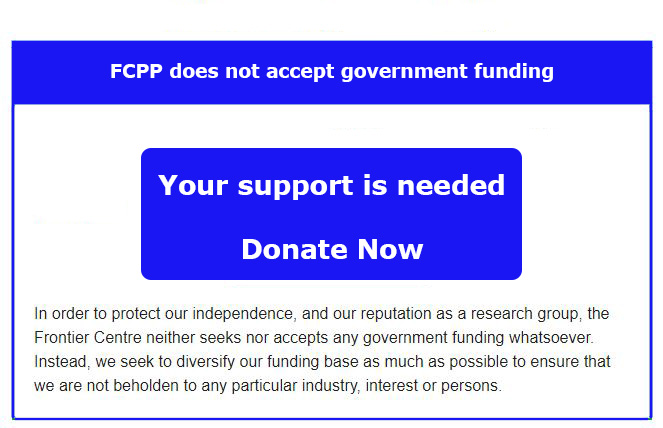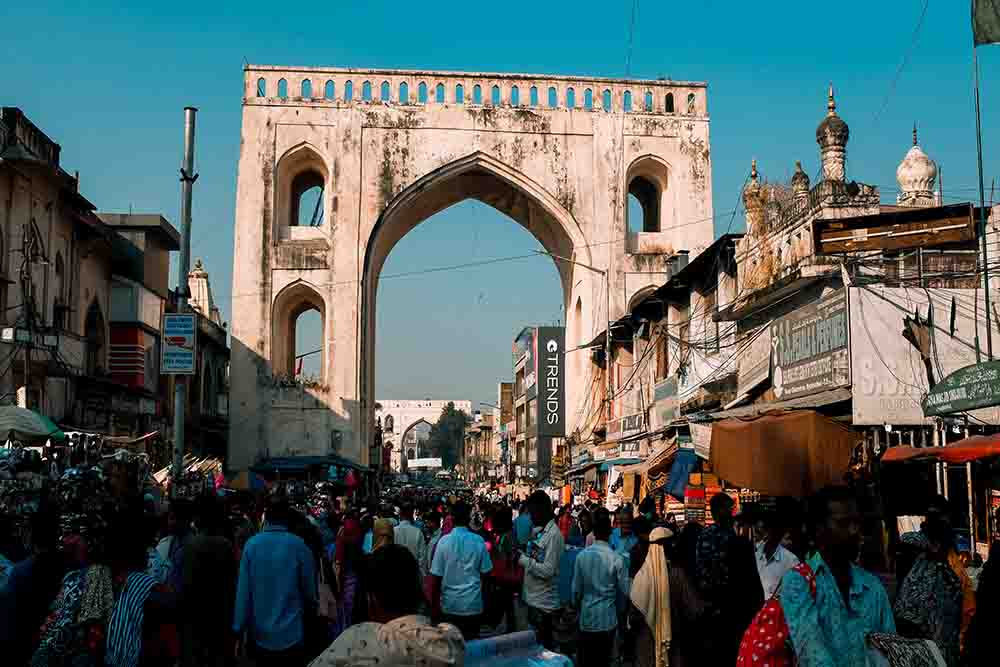China first reported the detection of an unknown strain of virus in Wuhan to the World Health Organization’s (WHO) Country Office in China on December 31, 2019, an event that changed the world.
Eleven million residents of Wuhan city were placed under an unprecedented quarantine. Soon thereafter, Italy quarantined around sixteen million people in the country’s northern Lombardy region. Within days, the quarantine was extended to the entire country, and Iran reported eight thousand forty-two cases with two hundred and ninety-one deaths.
On March 11, the WHO declared the outbreak to be a pandemic, and Europe was the new epicentre with more reported cases and deaths than the rest of the world combined, beyond China.
By March 14, Spain recorded a spike of nearly two thousand new cases with more than three thousand eight hundred confirmed cases and eighty-four deaths, resulting in a partial lockdown. Germany sealed its borders with France, Austria, Switzerland, Luxembourg, and Denmark. By March 16, Canada announced plans to close the border to non-citizens, as the country’s number of confirmed cases rose to three hundred and thirty-nine, with one death.
The Indian government finally placed the country under a twenty-one-day lockdown on March 24, eighty-four days after China reported the outbreak to the WHO and fifty-four days after India’s first reported case on January 30.
India temporarily suspended almost all visas and closed the land border starting on March 13, almost seventy-one days after China reported the spread of COVID-19 to the WHO, and twenty-five days after its own first case of COVID-19. India is now the global epicentre.
India was well positioned with the technological capabilities and capacity to respond to the pandemic. The Serum Institute of India after all has been the largest producer of the AstraZeneca vaccine, and India has a large network of private and government hospitals and well-trained doctors. Indian authorities could have done much better, given the scope and potentially catastrophic results.
It would appear that India’s self-confidence in responding to the virus was misplaced and perhaps even negligent. India, with a fifth of the global population, and perhaps the worst slums and marginalized populations, should have been far more concerned, anticipating and preparing for the pandemic.
Instead, there has been a societal failure: a failure to rein in religious and social gatherings, the exodus of people from urban to rural areas, and a total failure of political leaders to influence and curb social behaviour. Except for the periods of lockdowns, the markets and bazaars have been bustling with shoppers, trains, and buses without any attempts to socially distance, and movement across the country has been unrestricted.
In April, the Kumbh Mela religious festival in the northern city of Haridwar attracted millions of Hindu pilgrims from across India to the banks of the holy Ganges River, crowded shoulder to shoulder and with few wearing masks. This year, the government expected over a million pilgrims a day to bathe in the sacred river. Over five million people were expected per day on the most auspicious days—April 12, 14, and 21, 2021—for a total of one hundred million celebrants.1 This festival alone was not a super-spreader event; it was a juggernaut spreader.
This was a far cry from the government’s arrests and stigmatization of Indian Muslims, who were blamed for a surge in infections after about eight thousand people in the Tablighi Jamaat congregated at the group’s compound in New Delhi in March of 2020. Prime Minister Narendra Modi’s government arrested twenty-nine people, including sixteen foreigners, who participated in the missionary meeting.
Also in March of 2020, Indian authorities in the northern state of Punjab quarantined about forty thousand residents from twenty villages following a COVID-19 outbreak linked to a Sikh preacher who had ignored advice to self-quarantine and attended a religious gathering.
India is a country with enormous potential but it is also heavily shackled. India suffers from systemic biases based on religion, caste, politics, and class; each faction blaming the other for the challenges they face.
In the weeks and months following the emergence of the virus, India did almost nothing to systematically prepare its vulnerable populations for the ensuing onslaught of COVID-19. There was much sophistry in the political decision to airlift fifteen tonnes of medical supplies to China or COVID-19 vaccines to fifteen other countries, including Canada.2
Domestically, however, there was almost no observable change in the public’s behaviour; initial media reports focused on the challenges in China, blaming foreign tourists for importing the virus to the nation rather than focusing on curbing, educating, and informing on substantive matters.
Religion, superstition, and astrology have figured prominently in the failure to respond to the pandemic. Too many believe in faith over science: “Our faith is the biggest thing for us. It is because of that strong belief that so many people have come here to take a dip in Ganga. They believe that Maa (mother) Ganga will save them from this pandemic.”3
Homeopathic remedies and superstitious belief abounded as a means for fending off the virus and several popular Indian news stations touted India’s capacity to respond to the virus as being superior. The absurdity of the response included weird cures advanced by political leaders and leading public personalities like Amitabh Bachchan, a popular actor and former politician, suggesting that people blow into conch shells to ward off the virus.
There were no restrictions at congested wholesale markets, technology centres, or hospitals. Delhi’s central public hospital, the All India Institute of Medical Sciences (AIIMS), was lined with dying and sick patients. Their families slept on the lawns and beside the walkways leading to the hospital entrance, not to mention the halls and corridors, days and weeks before the initial lockdown. The impending catastrophe was inevitable.
The after-effects of this lethargic response have resulted in a social fracture, the widespread lack of hospital capacity, and even a shortage of oxygen. Earlier, there were reports of medical staff being evicted from their residences for fear that they may transmit the virus,4 chaos at bus terminals caused by migrant workers attempting to flee to their villages, and the ostracization of foreigners.5
The citizens of India deserved a well thought-out response and mobilization; instead, what they got were reflexive, draconian lockdowns followed by free-for-all super-spreader events. India’s lockdowns merely provided a reprieve for the government to figure ways out of its mismanagement, a fact confirmed by Modi’s apology to the nation last year.6 Lockdowns set in motion potentially catastrophic mass migrations transporting COVID-19 across the nation, and in the long run, they have been nothing more than temporary window dressing in what should have been a sustained response to the pandemic.
India has failed its citizens, especially the majority of vulnerable and destitute who lack a voice, and who will inevitably fade away without the government’s sympathy or empathy. A medieval disaster is playing out in modern India.
As of April 23, 2021, India reported the world’s highest daily tally of coronavirus infections for a second day, surpassing three hundred and thirty thousand new cases. Deaths in the previous twenty-four hours, of those that are known, also jumped to a record two thousand two hundred and sixty-three.7 And now, there is a so-called double-mutant variant of COVID-19 (B.1.617) feared to be driving a record surge in new cases in India and threatening global spread.8 
According to the WHO, there were 16,263,695 confirmed cases of COVID-19 with 186,920 reported deaths as of April 20, 2021 in India.9 The current projection estimates 959,561.49 deaths by August 1, 2021. A worst-case scenario projects 1,045,606.48 deaths, and even if there were universal adherence to masking, 879,899.92 deaths are expected.10 The dying and dead, the thousands being cremated on open pyres, those unable to get to a hospital, or unable to get oxygen—all this is shocking and strains outrage and exhaustion.
There is likely to be a comparison with a similar tragedy unfolding in Brazil. However, Brazil has a population of approximately two hundred and eleven million compared to India’s 1.366 billion; the potential of the catastrophe is simply not comparable.
According to official reports, more than two thousand people are dying every day in India from COVID-19; experts within the Indian health-care system, however, believe that number is a dramatic underestimate and has already passed ten thousand per day.11
At the month-long festival, Kumbh Mela, as many as two thousand one hundred and sixty-seven people tested positive for COVID-19 in the last five days, confirming fears that one of the world’s largest religious gatherings may contribute further to the rapid rise in infections. According to state officials, there were two hundred and fifty-four COVID-19 positive cases on April 10, three hundred and eighty-six on April 11, four hundred and eight on April 12, five hundred and ninety-four on April 13, and five hundred and twenty-five on April 14, yet despite the unfolding catastrophe, the super-spreader event continued until the end of April.12
On April 21, 2021, British Columbia confirmed thirty-nine cases of the B.1.617 variant, while Quebec reported its first known case of the new variant.
In response to growing concerns, the Canadian government announced a thirty-day ban on passenger flights from India and Pakistan.
The ban instituted by Canada and several other countries on travellers from India could not have come soon enough. The ban is necessary not only to contain what is potentially a petri dish for increasing numbers of viral mutations, but also to put on notice leaders who have not been willing to institute the difficult and crippling controls that are necessary for global security.
This is also a global battle for the control, if not eradication, of this virus. And eradication is potentially possible because several jurisdictions have been able to control virus spread effectively—New Zealand and Israel as examples.
Countries that fail to do their part in controlling this pandemic, which we now know spreads dizzyingly quickly, are not only failing their own citizens, they are culpable for the consequences of their perfidious responses and the global tally of human casualties and economic damage.
Canada’s ban on travel from India is an important message that goes beyond just our safety; it is a message to India and others, including Brazil, to get their houses in order.
[show_more more=”SeeEndnotes” less=”Close Endnotes”]
- Tulasi Srinivas, “India Prepares for Kumbh Mela, World’s Largest Religious Gathering, Amid COVID-19 Fears,” The Conversation, April 8, 2021. https://theconversation.com/india-prepares-for-kumbh-mela-worlds-largest-religious-gathering-amid-COVID-19-fears-158364.
- Staff, “India Sends Covid 19 Vaccines to Afghanistan,” Livemint, February 7, 2021. https://www.livemint.com/news/india/india-sends-COVID-19-doses-to-afghanistan-11612672984034.html.
- Staff, “India: Hindu Festival Turns to Super Spreader Event as COVID Infections Soar,” Deutsche Welle, April 15, 2021.. https://www.dw.com/en/india-hindu-festival-turns-to-superspreader-event-as-COVID-infections-soar/a-57218497.
- HT Correspondent, “COVID-19: Delhi Govt.’s Warning to Landlords Asking Medical Staff to Leave,” Hindustan Times, March 25, 2020. Accessed April 2, 2020. https://www.hindustantimes.com/india-news/coronavirus-update-delhi-govt-to-take-strict-against-those-who-force-medical-staff-to-vacate-house/story-UexhYwnYJUMu2YVJN22wPK.html.
- Vikas Pandey, “Huge Crowds as Lockdown Sparks Mass Migration,” BBC, March 30, 2020. Accessed April 2, 2020.
- Emily Schmali and Aijaz Hussain, “India’s Narendra Modi Apologizes to Citizens Amid 3-Week Coronavirus Lockdown,” Associated Press, Global News, March 29, 2020. Accessed April 2, 2020. https://globalnews.ca/news/6747584/coronavirus-india-modi-apology/.
- Thomson Reuters, “For 2nd Day in a Row, India Posts Global Record for New COVID-19 Cases,” CBC, April 23, 2021. https://www.cbc.ca/news/world/india-surge-coronavirs-1.5999264.
- Saba Aziz, “COVID-19 Variant First Detected in India Found in Canada: What We Know So Far,” Global News,
- World Health Organization. https://COVID19.who.int/region/searo/country/in.
- The Institute for Health Metrics and Evaluation (IHME), “COVID-19 Projections.” https://COVID19.healthdata.org/india?view=total-deaths&tab=trend.
- Rana Ayyub,“‘This is Hell.’ Prime Minister Modi’s Failure to Lead Is Deepening India’s COVID-19 Crisis,” TIME, April 23, 2021. https://time.com/5957118/india-COVID-19-modi/.
- Staff, “Over 2,000 COVID-19 Cases Detected at Haridwar Kumbh Mela in Past 5 Days,” April 15, 2021. Livemint.com. https://www.livemint.com/news/india/over-2-000-covid-19-cases-detected-at-haridwar-kumbh-mela-in-past-5-days-11618486690202.html.
[/show_more]
Anil Anand is a research associate with the Frontier Centre for Public Policy.
Photo by Tejj on Unsplash.



